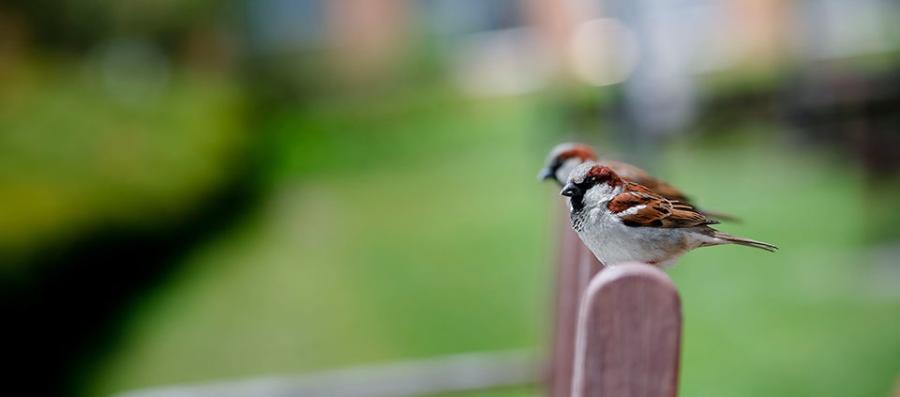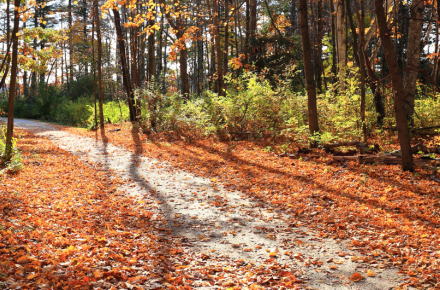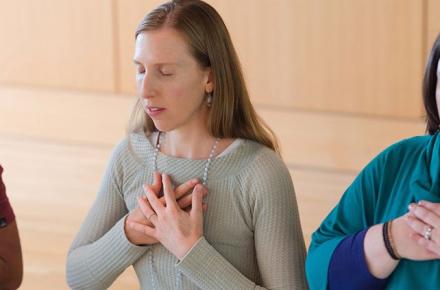Cultivating Self-Compassion Through Birding

by Janet Arnold-Grych
I recently attended a women’s leadership gathering and the parting words of one of the speakers were, “Be kinder to yourself. You would never talk to others the way you talk to yourself.” A surprised and somewhat uncomfortable ripple spread through the group. It was as though the cover had been pulled off a shared vulnerability; we all recognized it yet no one in this group of high achievers wanted to claim ownership.
For many of us, a double standard in compassion does exist. We’ve all berated ourselves for common errors. We forget an appointment and growl self-disparaging words; yet our colleague forgets and we inform her she's simply overextended. Smoothing out the edges of self-criticism requires not only a greater emphasis on observation over judgment, it also requires a gentleness and compassion that is at the core of mindfulness.
Jon Kabat-Zinn, PhD, creator of the renowned Mindfulness-Based Stress Reduction program, explains mindfulness as the ability to “rest in awareness.” There is a focus on meeting each moment and then letting it go. As we more skillfully attend to each moment, we are better able to assess and choose, releasing distortions around the experience. A rebalancing of our natural state occurs; self-compassion happens, but not overnight.
How to bolster this ability to rest in awareness? One answer may be found in the calming call of our winged friends. That’s right, the birds.
So what does birding have to do with self-compassion? Those unfamiliar with birding might imagine a spectator with binoculars held aloft in rapt attention, waiting for a flash of color in order to check the species off a list. That might be one way to do it. Birding as a contemplative practice, however, can be about the thrill of just discovering what is in that moment.
Becky Cushing is director of Mass Audubon’s Berkshire Wildlife Sanctuaries and oversees conservation and education programs throughout Berkshire County, Massachusetts. She defines birding simply as “observing birds.” She shares that “a lot of the disinterest and limitations in birding arise when we try to [do it in the way] we think we are supposed to. In a similar way, I’ve witnessed frustration arise when we try to practice mindfulness in a way we think we are ‘supposed to.’”
Becky explains that there are many ways to engage in birding and that it’s actually an interesting exercise to move between them. “I like to push edges so I challenge myself to try different ways of observing birds all the time,” says Becky. “I’ve learned to be okay with not being able to identify a bird by sight or sound—maybe because it flew by quickly, or it’s making a confusing sound. Unless I’m doing a formal bird survey for research purposes, there is no need to name a bird. Sometimes, it’s nice to let the dawn chorus of birdsong wash over you without ever lifting your binoculars.”

Steven Leonard, yoga and meditation instructor and Kripalu faculty member, teaches a Birding and Mindfulness program with Becky and sees the parallels between yoga and birding. “Yoga means ‘to yoke, join, or connect,’” says Steven, “and the idea is to intentionally connect with the things that make you feel most alive, healthy, balanced, and satisfied.”
Connecting to the senses, bringing each moment into focus, can be a bridge to embracing a softer relationship with ourselves. “Birding offers an opportunity to awaken the senses,” says Steven. “There is a more open and expansive way of sensing, without needing to focus or interpret. There can also be a more focused and detailed way of analyzing what it is that you see, hear, feel, etc.”
Of course, removing ourselves from the everyday and giving ourselves over to the beauty of nature is a joy in and of itself. Allowing ourselves to stand in “what is” also builds the muscles of mindfulness, connecting us to our kinder, gentler self, a self that’s more likely to label our mistakes as errors and omit the commentary. As Jon Kabat-Zinn says, it’s not that mindfulness cures us or removes the difficulties of life, but it does help us to heal.
Self-compassion can be a tough hill to climb and climb again. We hear the harsh chatter float back in and lose traction. Cultivating self-compassion requires active involvement. Stepping into nature and connecting to birds, in the manner that speaks to each of us, can remind us to move moment by moment and embrace gentleness. The poet Hafiz wrote, “I wish I could show you, when you are lonely or in darkness, the astonishing light of your own being.” To celebrate ourselves, not our accomplishments or accolades, but the fullness of each moment and our connection to it, is a gift waiting to be experienced.
Janet Arnold-Grych is a yoga teacher and writer whose work has been published in Elephant Journal, Huffington Post, Third Coast Digest, and other outlets.
© Kripalu Center for Yoga & Health. All rights reserved. To request permission to reprint, please e-mail editor@kripalu.org.



















































